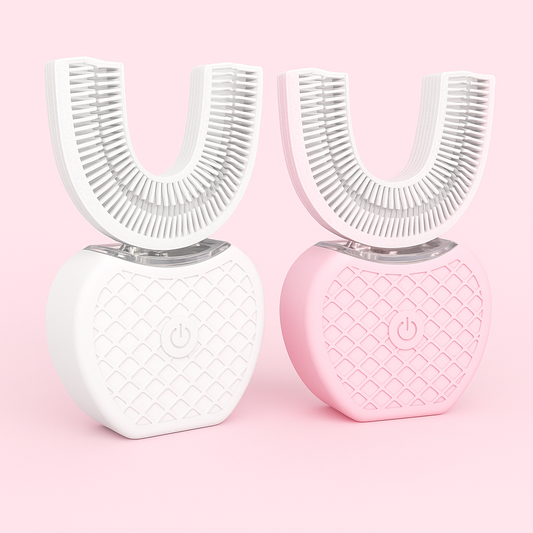Introduction: A New Era for Fluoride-Free Toothpaste
Consumers in 2025 are more ingredient-savvy than ever. They don’t want just surface-level shine; they want products that support long-term oral health, reduce sensitivity, and prevent future staining. That shift has driven innovation in formulations that pair functional actives rather than relying solely on abrasives or peroxide-based whiteners. Two ingredients increasingly found in modern fluoride-free formulas are niacinamide and xylitol. When combined thoughtfully, these actives can transform a regular whitening paste into a true treatment for teeth—supporting gum health, managing harmful bacteria, and improving whitening outcomes without fluoride.
What Are Niacinamide and Xylitol? A Quick Primer
- Niacinamide (Vitamin B3): A stable, water-soluble form of vitamin B3 widely used in skin care for anti-inflammatory and barrier-supporting effects. In oral care, niacinamide is gaining attention for similar properties—helping to soothe gum tissues, support mucosal barrier function, and modulate local inflammation.
- Xylitol: A natural sugar alcohol that tastes sweet but cannot be metabolized by many cavity-causing bacteria. Xylitol reduces bacterial adhesion and metabolism, stimulates saliva flow, and supports a less cariogenic oral environment. It’s commonly used in chewing gum, lozenges, and toothpaste as a cavity-fighting ingredient.
Why Combine Them in Fluoride-Free Toothpaste?
Fluoride has long been the cornerstone of remineralization and cavity prevention. However, some consumers prefer fluoride-free options for medical, personal, or regulatory reasons. In the absence of fluoride, toothpaste needs other mechanisms to offer meaningful protection and cosmetic improvement. Here’s how niacinamide and xylitol work together to fill that role:
- Control biofilm and stains: Xylitol reduces the growth and adherence of Streptococcus mutans and other cariogenic species, decreasing plaque accumulation and the organic matrix that traps stains.
- Support soft-tissue health: Niacinamide helps calm inflammation and supports the integrity of gum tissue, which can reduce gingival recession and the exposure of darker root surfaces that negatively affect smile aesthetics.
- Enhance saliva protective functions: Xylitol stimulates salivary flow and helps maintain pH balance, which assists natural remineralization processes even when fluoride is not present.
- Improve whitening efficacy: With less plaque and healthier gums, gentler whitening agents or fine polishing systems can remove surface stains more effectively and with less sensitivity than abrasive-heavy formulations.
How Xylitol Works: The Microbial and Salivary Benefits
Xylitol’s dental benefits are well-established in preventive dentistry. Key mechanisms include:
- Anti-cariogenic action: Xylitol is taken up by certain oral bacteria but cannot be fully metabolized, which disrupts their energy production and growth.
- Reduced bacterial adhesion: Regular exposure to xylitol reduces the ability of S. mutans to stick to tooth surfaces, leading to lower plaque levels.
- Increased saliva flow: Stimulating saliva enhances buffering of acids, improves clearance of sugars, and delivers ions that help maintain enamel strength.
These effects make xylitol a powerful component of any toothpaste with xylitol aimed at preventing stains and decay while supporting whitening goals.
How Niacinamide Helps: Anti-Inflammatory and Barrier Support
Niacinamide is best known in dermatology but has promising utility in oral health. Its relevant actions include:
- Anti-inflammatory properties: Niacinamide can reduce pro-inflammatory mediators in mucosal tissues, which may help with gingival tenderness and redness.
- Barrier function: It supports cellular processes that maintain mucosal integrity. Healthy gums are less prone to recession and bleeding, improving long-term appearance and comfort.
- Sensitivity modulation: By supporting tissue health, niacinamide may help reduce sensitivity indirectly, allowing whitening systems to be used more comfortably.
Although the body of clinical research on niacinamide used directly in oral-care formulations is still growing, translational evidence from mucosal biology and early trials indicates meaningful benefits when included at appropriate concentrations.
From Cosmetic to Therapeutic: What Makes a Toothpaste a ‘Treatment’?
A cosmetic paste mainly hides stains or polishes enamel. A treatment-focused toothpaste works on underlying causes. The combination of xylitol and niacinamide in a well-formulated, fluoride-free paste targets:
- Microbial ecology (reducing plaque and stain-causing biofilms).
- Soft-tissue inflammation and barrier health (supporting resilient gums).
- Saliva function (promoting natural defense and remineralization without fluoride).
- Mild stain removal using low-abrasivity polishing systems or safe chemical whiteners.
When these mechanisms are present together, the product moves beyond cosmetic brightening toward a daily therapeutic regimen that supports long-term health teeth.
Formulation Considerations: What to Look For
Not all fluoride-free toothpastes are created equal. When evaluating a paste that claims to be therapeutic and whitening, check for:
- Effective concentrations: Xylitol should be present in meaningful amounts (formulators often aim for concentrations that provide sustained exposure during brushing). Niacinamide should be included at levels shown to be biologically active but safe for mucosal use.
- Balanced abrasivity: Look for low to medium relative dentin abrasivity (RDA) values and gentle polishing agents (e.g., fine silica) to avoid enamel wear.
- Complementary remineralizing actives: Calcium and phosphate systems (like CPP-ACP or hydroxyapatite) can support enamel repair in fluoride-free formulations.
- pH and preservative balance: A neutral or slightly alkaline pH helps buffer acids; safe preservatives and stabilizers ensure product integrity without irritating tissues.
- Transparent labeling and third-party testing: Clinical data, lab testing, or seals from dental organizations add credibility to efficacy and safety claims.
Daily Routine: How to Use a Niacinamide + Xylitol Fluoride-Free Toothpaste
- Brush gently twice a day for two minutes with a soft-bristled toothbrush. Apply a pea-sized amount of toothpaste and focus on technique rather than force.
- Floss daily to remove interdental plaque where stains and bacteria accumulate.
- Consider a xylitol-containing sugar-free gum after meals to extend the anti-cariogenic effect between brushings.
- Avoid harsh alcohol-based rinses that can dry oral tissues. Choose alcohol-free mouthwashes or simple water rinses if you’re sensitive.
- Use whitening adjuncts (strips or trays) cautiously and preferably under the guidance of a dental professional, especially if you have sensitivity or gum disease.
- Keep regular dental check-ups to monitor enamel health and get professional cleanings that complement at-home preventive care.
Who Should Consider Fluoride-Free, Niacinamide + Xylitol Toothpaste?
Fluoride remains a key preventive tool for many, but the niacinamide + xylitol approach may be appropriate for:
- People with fluoride sensitivities or those under specific medical advice to avoid fluoride.
- Individuals seeking a gentler whitening experience due to sensitivity or gum issues.
- Users prioritizing holistic or multi-functional formulas that address both cosmetic and inflammatory drivers of oral problems.
- Those looking for toothpaste that whitens teeth while also reducing plaque and improving gum comfort.
Note: Children, people with high caries risk, and those with complex dental histories should consult their dentist before switching away from fluoride-based prevention.
Comparing Fluoride vs Fluoride-Free: The Balanced View
Both approaches have trade-offs:
- Fluoride-based formulas: Strongly supported for remineralization and cavity prevention across populations. They are often the first-line recommendation for caries prevention by dental professionals.
- Fluoride-free formulations with xylitol and niacinamide: Offer meaningful anti-caries and anti-plaque benefits through different mechanisms and can be preferable for certain users. They also provide improved soft-tissue support and may enhance whitening outcomes by addressing biofilm and inflammation.
The best choice depends on individual risk factors and personal preferences. Where fluoride is contraindicated or undesired, choose a well-designed fluoride-free product that contains complementary actives like xylitol, calcium/phosphate systems, and niacinamide to maximize protection.
Safety and Side Effects
- Xylitol: Safe for human use in toothpastes and chewing gums but toxic to dogs; keep products away from pets. Rarely, high dosages of polyols can cause mild gastrointestinal upset.
- Niacinamide: Generally well-tolerated topically; in oral products it is used in concentrations designed for mucosal safety. If you have a known sensitivity to niacin derivatives, check ingredient lists or patch test in consultation with a healthcare provider.
- General oral care safety: Always avoid swallowing toothpaste, supervise young children during brushing, and follow pediatric dosing guidance.
Scientific Evidence: What the Research Supports
Numerous clinical studies support xylitol’s role in reducing caries risk and decreasing plaque. The body of evidence for niacinamide in oral care is growing, with promising mechanistic data and early clinical observations supporting its anti-inflammatory and tissue-supportive roles. While more large-scale clinical trials specifically on niacinamide-containing toothpaste would strengthen the evidence base, the existing translational science supports its inclusion where gum health is a priority.
How to Read Labels: SEO-Friendly Keywords and What They Mean
When shopping, you might see many of these keyword phrases. Here’s what they typically indicate:
- Good whitening toothpaste: Refers to a product with both stain removal and safety—look for low abrasivity and trusted active ingredients.
- Toothpaste without fluoride / Fluoride toothpaste free: No added fluoride; check for alternative remineralizing agents like hydroxyapatite or calcium phosphate.
- Toothpaste with xylitol: Contains xylitol as an active to reduce plaque and support saliva; useful in fluoride-free strategies.
- Niacinamide toothpaste: Contains vitamin B3 for gum and mucosal support—look for listed concentration and any clinical claims.
- Best toothpaste whitening teeth / Best toothpaste for whiter teeth: Marketing phrases—seek third-party testing or clinical data rather than marketing alone.
Product Examples and How to Evaluate Them (What to Avoid)
While I won’t list specific branded products here, evaluate candidates using this checklist:
- Ingredient transparency and clear labeling of xylitol and niacinamide levels.
- Low-abrasivity polishing system (avoid high RDA scores).
- Inclusion of remineralizing supports when fluoride is absent (e.g., calcium/phosphate).
- Third-party lab testing, clinical trial references, or dentist endorsements.
- Good consumer reviews that describe long-term results rather than immediate cosmetic effects only.
Advanced Tips: Combining Home Care With Professional Treatments
- Use niacinamide + xylitol toothpaste daily and pair with periodic professional cleanings to remove hardened calculus that at-home products can’t address.
- For stubborn intrinsic stains, consult your dentist. Professional whitening or microabrasion may be necessary—your daily treatment toothpaste supports maintenance between procedures.
- If you’re undergoing orthodontic work, speak to your provider about integrating xylitol products to lower plaque accumulation around brackets.
Expanded FAQ
- Does xylitol whiten teeth? Not directly. Xylitol reduces plaque and bacterial stain contributors, which can lead to a cleaner, brighter surface that makes whitening agents more effective.
- How quickly will I see results? Soft-tissue improvements may be noticed within a few weeks. Plaque reduction and maintenance benefits accrue over months with consistent use. Visible whitening depends on the degree and type of staining.
- Can I use niacinamide + xylitol toothpaste with other whitening products? Yes, but monitor sensitivity and consult your dentist before combining with stronger peroxide-based treatments.
- Is toothpaste safe as an acne treatment (toothpaste zit)? No. Oral care ingredients are not formulated for skin and can irritate or worsen acne. Use proven dermatologic acne treatments instead.
SEO and Search Tips: How to Find the Right Product Online
Use targeted search phrases that match functional goals rather than generic marketing. Try queries like:
- "best toothpaste whitening teeth with xylitol"
- "niacinamide toothpaste for gum health"
- "toothpaste without fluoride and remineralizing"
Look for product pages that list ingredients, explain mechanisms, and include links to clinical data or third-party validation.
Conclusion: Turning Daily Oral Care Into Real Treatment
When formulated well, a fluoride-free toothpaste that combines niacinamide and xylitol can do more than brighten. It becomes a multi-mechanistic daily treatment that addresses biofilm control, gum inflammation, saliva function, and stain susceptibility. This approach aligns cosmetic goals with preventive care—helping you achieve a whiter smile while supporting health teeth over the long term.
If you’re ready to try an effective fluoride-free option that targets both whitening and oral health, consider exploring curated products from Havana Body. They offer blends designed to act as both a good whitening toothpaste and a supportive daily treatment for teeth. Learn more at best toothpaste whitening teeth, check specific formulations under toothpaste with xylitol, or shop their selection of toothpaste without fluoride to find the right match for your oral care goals.
Final note: This article provides general information but is not a substitute for professional dental advice. For personalized guidance—especially if you have a history of dental disease, are pregnant, or are shopping for children—consult your dentist before making significant changes to your oral-care routine.


